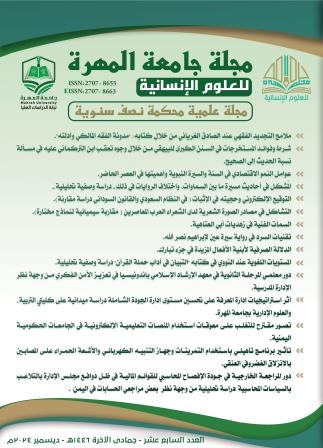"The Effect of Rehabilitation Program by Using Balance Exercises and Electrical Stimulation Device, and Infrared on People with a Herniated Cervical Disc "
DOI:
https://doi.org/10.71311/.v5i2.166Keywords:
Rehabilitation program, electrical stimulation, infrared, cervical disc herniationAbstract
This research aims to design a program of rehabilitation using balance exercises and studying its impact with some of physical therapy means on people with a herniated cervical disc by improvement of the long kinesthetic, muscular strength and degree's of balance of the patient search sample. the researcher used pilot curriculum for Pilot Group using the pre- and post mensuration for its appropriation to the research innate. The research sample has been chosen the judgmental by talking a sample of (10) on people with a herniated cervical disc. About the tools used in the research, The researcher focused on using: a
resist- meter to measure length, a medical balance for weight, a dynamometer for measuring muscles, electric stimulation, electrical stimulation infrared, For the treatment of data statistical treatments the (arithmetic mean, Standard deviation, (T- TEST, ) have been used .The results of the research concluded that the qualification program has a positive impact on the injured patients of the sample and there were differences which have high statistical significance between the pre- andpost-degrees of mensuration of the improvement of long kinesthetic, muscular strength and degree of balance of the injured part in the interest of the means of post measurement of the research. the most important recommendations of the research is the importance of implementation the rehabilitation program of generalizing its usage in hospitals, health centers and public and private therapeutic institutions wherever there are such injuries.
Downloads

Downloads
Published
How to Cite
Issue
Section
License
Copyright and Licensing
copyright is retained by the authors. Articles are licensed under an open access Creative Commons CC BY 4.0 license, meaning that anyone may download and read the paper for free. In addition, the article may be reused and quoted provided that the original published version is cited. These conditions allow for maximum use and exposure of the work.

